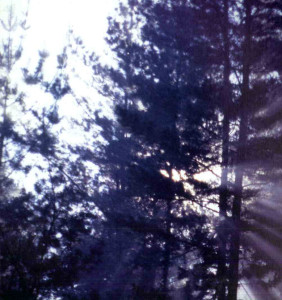 The dove shooting season opens in September and lasts until November as this is the time of the year when doves migrate from northern areas towards the south looking for warmer habitats; this migration receives the name of usopasa. In February the doves travel in the opposite direction, from south to north, kontrapasa.
The dove shooting season opens in September and lasts until November as this is the time of the year when doves migrate from northern areas towards the south looking for warmer habitats; this migration receives the name of usopasa. In February the doves travel in the opposite direction, from south to north, kontrapasa.
One of the oldest methods to hunt birds is the use of nets, a trapping device used long before the arrival of shotguns. In spite of the popularity of later hunting styles (decoys, shotguns, etc.), we shall concentrate on the traditional of net hunting.
The day’s hunting starts early in the morning, before dawn. The hunters, dressed in dark clothing, occupy their places waiting for the game between mountains and in narrow passages along the route usually followed by flight. In those concealed sites nets are spread hanging from tree to tree.
In order to scan better the flight of doves, some hunters make their stand in a type of tower construction called estalaria. When the group of birds is located, the hunters scare the birds by throwing up in the sky wooden disks with a handle painted white on both sides called karrotak. These discs rotate around their axle resembling white tailed kites, so the frightened doves carefully lower their flight towards the nets and try to land on the ground to flee from danger. At this moment the net handlers free the nets, which drop on top of the doves catching them underneath.
If the flight of doves proceeds in the opposite direction to where the nets are placed, the hunters will be ready to throw up the discs once again until they succeed in directing the doves towards the nets. White sheets (as doves are scared of white) and horns are also used, as well as a great deal of screaming and shouting.
The dispatched doves are shared amongst all the hunters. Nevertheless, during the last few years the amount of doves has decreased badly and thus the day’s prize that dove hunters take home.


